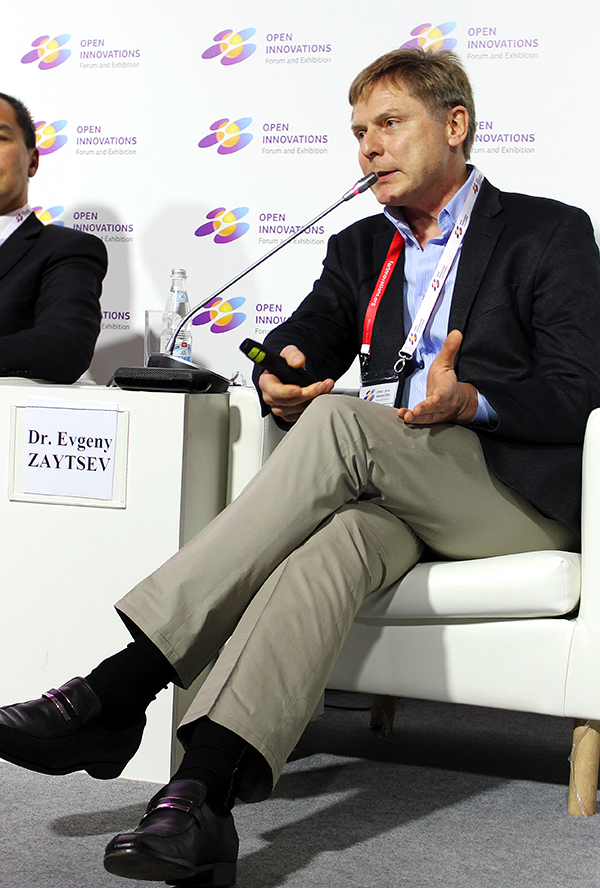
Dr. Evgeny Zaytsev, Managing Partner, RMI Partners: “Exits in biotech usually have a very “long tail” of payments
Print 16 October 2014

As part of the Panel Discussion “Optimal Strategies and Exit Models for Venture Investors” held during 3rd Moscow International Forum for Innovative Development “Open Innovations” Evgeny Zaytsev shared his experience of various exit models from venture investments in biotech.
Exit models in Life Sciences VC are very different from other business areas, i.e., investors shall consider specific investment strategies and carefully plan for timing of such exits. Exits in the biotech often have a very “long tail” of payments. This means that shareholders only receive a fraction of the transaction value at exit; the remaining payments may be spread across the following 3-5 years as milestone payments (so called “biobucks”). In order for investors to receive those payments the company shall demonstrate strong performance: successful clinical results or strong sales.
IPO is not an exit, but rather a financing event in the biopharmaceutical industry. First of all, there is always a lock-up period for existing investors after the IPO. When the lock-up is over investors can only sell blocks of shares, and it is never the optimal price. IPO becomes an exit strategy when it is a value-added event: i.e. the IPO financing allows the company create additional vale by either making progress with their clinical programs or by creating partnership opportunities. This value is reflected in the stock appreciation in the capital markets, which in turn creates an exit opportunity for investors. The biotech IPO market has been overheated recently; however for most of the investors in those public companies the offerings have not realized their value yet.
In many cases, product or market failures are realized after the company goes public – investors write down their positions before the lock-up ends and the exit is realized. However, it is not the end: many of such companies launch additional programs (they have cash) or raise additional money from venture investors (PIPE, private investment in public equity) and reposition their business. The exit in such cases is realized after the new program is sold to a strategic or the stock is greatly appreciated.
Not all companies are created to go public. An IPO can only be an acceptable strategy for those who have valuable corporate partnerships in place and/or several different products in the pipeline. If a company doesn’t have any partnerships and only one product in development, it is likely to become an attractive acquisition target rather than an IPO candidate. For a venture capitalist an M&A model is actually more attractive as an exit strategy. It is easier, cheaper, and investors get their money back right away to distribute capital to their LPs.
Web-site www.forinnovations.ru
All Portfolio
MEDIA CENTER
-
The RMI group has completed sertain projects
The RMI Group has exited from the capital of portfolio companies:
Marinus Pharmaceuticals, Inc.,
Syndax Pharmaceuticals, Inc.,
Atea Pharmaceuticals, Inc.

